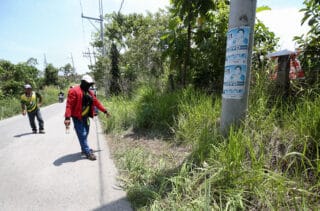My grandmother suffered a hip dislocation last year that led to her physical disability. She is now wheelchair-bound, unable to walk or move on her own. Her sons and daughters want her to undergo rehabilitation, hoping that she would be able to move on her own or with minimal assistance from her caregivers.
Our family decided to seek consultation at the outpatient department of the Philippine General Hospital. Our first and subsequent visits to the hospital made me realize how our society has failed to better advocate for the welfare of persons with disabilities (PWDs).
We have failed to eradicate both physical and nonphysical barriers to access, and this failure continues to limit other people’s functioning and, sometimes, increase societal exclusion and neglect.
Stairs and curbs block a PWD with physical limitations from entering a building. Buildings without a wheelchair ramp or elevator prevent access to higher floors. Ironically, even some government buildings do not have these facilities. What’s worse is the sorry state of our public transportation system. There is clearly lack of access to accessible or convenient public transportation. Our public utility vehicles are not designed to transport persons with physical disabilities. Sadly, the majority of our train stations do not have wheelchair ramps, let alone an elevator.
These physical features that many of us take for granted can present serious problems for PWDs, mainly because their unique needs were not considered in the design of these features. This lack of consideration goes beyond designing buildings or parks. It extends to the ways persons with disabilities are treated when they seek employment or education and avail themselves of services.
To some extent, this situation has been addressed by laws that guarantee some degree of access to facilities, employment, services, and education. However, PWDs, especially those with physical impairment, need more than just an identification card and entitlement to food, transportation, entertainment, and health care discounts. We need to break down structural and nonstructural obstacles that block or prevent mobility and access. Society should adjust to the needs of PWDs, and not the other way around.
REINER LORENZO J. TAMAYO, RN
Philippine General Hospital
renztamayo@gmail.com



